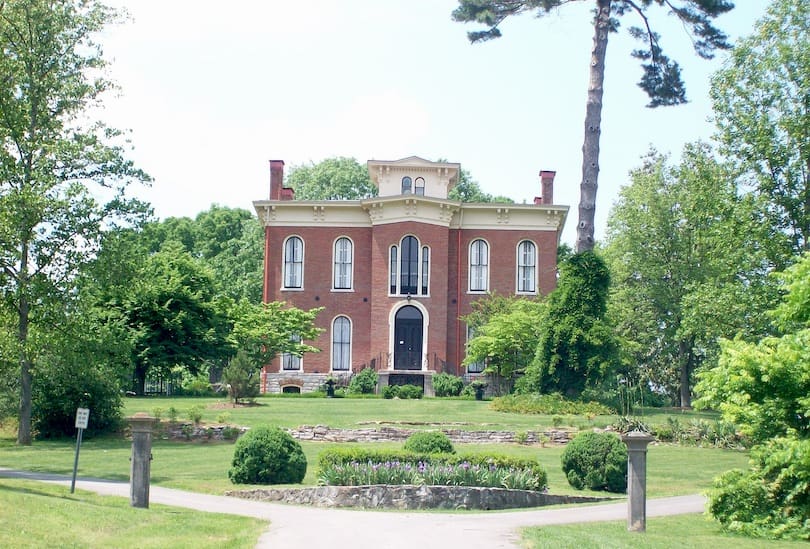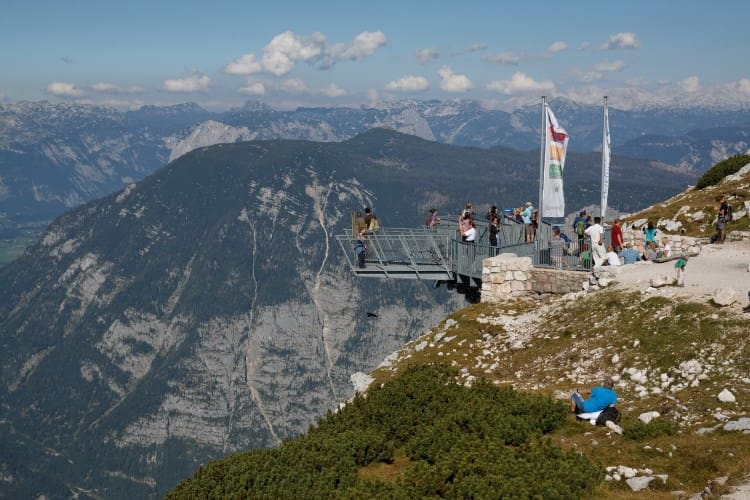In a world filled with stunning destinations and rich histories, exploring historical places is like taking a journey through time. These remarkable sites not only offer a glimpse into our past but also showcase the incredible achievements of civilizations long gone. If you’re a history enthusiast or simply someone who appreciates the beauty of antiquity, this article is tailored just for you. We’ve compiled a list of the best 8 historical places to visit in the world, each with its unique charm and historical significance.
1. The Great Wall of China: A Marvel of Ancient Engineering
The Great Wall of China is an extraordinary testament to human ingenuity. Stretching over 13,000 miles, it winds its way through China’s diverse landscapes. Built to protect against invasions, this colossal wall dates back over 2,000 years and is a UNESCO World Heritage Site. Visitors can hike along its well-preserved sections, marveling at the breathtaking views while immersing themselves in China’s rich history.
The construction of the Great Wall began during the 7th century BC and continued for centuries. It’s not just one wall but a network of walls and fortifications designed to protect various Chinese states from northern invaders. Today, it stands as one of the most iconic historical sites on the planet, a testament to the determination and skill of the ancient Chinese people.
As you explore this monumental structure, you’ll encounter watchtowers, stunning landscapes, and gain insight into the challenges faced by the workers who built it. Don’t forget to bring your camera; the Great Wall’s captivating vistas make for unforgettable photographs.
2. Machu Picchu: The Lost City of the Incas
Perched high in the Andes Mountains of Peru, Machu Picchu is a remarkable archaeological treasure that has captured the imaginations of travelers for generations. This ancient Incan citadel, dating back to the 15th century, is often referred to as the “Lost City of the Incas” due to its remote location and hidden nature.
Machu Picchu is not just a historical site; it’s a breathtaking blend of architecture and natural beauty. The city features intricately constructed stone buildings, terraced fields, and temples that provide a glimpse into the advanced engineering and astronomical knowledge of the Inca civilization.
To truly appreciate the grandeur of Machu Picchu, consider embarking on the Inca Trail, a multi-day hike that offers a challenging yet rewarding journey to the site. Alternatively, you can take a train and bus to reach this majestic destination. Whichever route you choose, witnessing the sunrise over Machu Picchu is an unforgettable experience.
3. Petra: The Rose-Red City of Jordan
Hidden away in the desert canyons of Jordan, Petra is an archaeological wonder known as the “Rose-Red City” due to the color of its stone. This ancient Nabatean city, carved into the rose-red cliffs of southern Jordan, dates back to 300 BC. Its intricate architecture and rock-cut structures make it a true marvel of human achievement.
One of Petra’s most iconic sights is the Treasury, a stunning facade carved into the rock. As you explore further, you’ll discover a network of tombs, temples, and an ancient theater that once hosted events for thousands of people. The site’s rich history and impressive architecture have earned it a place on UNESCO’s list of World Heritage Sites.
To make the most of your visit, consider hiring a local guide who can share the fascinating stories and history of Petra. Whether you explore the city by day or take a candlelit tour by night, Petra’s allure is undeniable.
4. The Pyramids of Giza: Ancient Wonders of Egypt
No list of historical places would be complete without mentioning the Pyramids of Giza. These colossal structures, built over 4,500 years ago, are a testament to the advanced engineering skills of the ancient Egyptians. The Great Pyramid, in particular, stands as one of the Seven Wonders of the Ancient World.
The Pyramids of Giza were constructed as tombs for the pharaohs, designed to house them in the afterlife. Each pyramid is a marvel of precision and planning, with the Great Pyramid being the largest and most famous. Its construction is shrouded in mystery, with theories ranging from the use of ramps to extraterrestrial involvement.
When you visit Giza, you’ll have the chance to explore not only the pyramids but also the nearby Sphinx and various temples. The sheer size and grandeur of these structures will leave you in awe, and the opportunity to learn about ancient Egyptian culture and history is an enriching experience.
5. The Colosseum: Rome’s Iconic Amphitheater
In the heart of Rome stands the Colosseum, an enduring symbol of ancient Roman engineering and entertainment. This colossal amphitheater, also known as the Flavian Amphitheatre, was built in AD 70-80 and could seat over 50,000 spectators. It hosted a variety of events, including gladiator contests, animal hunts, and dramatic performances.
As you step inside the Colosseum, you’ll be transported back in time to an era of grand spectacles and epic battles. The structure’s impressive arches and intricate design showcase the architectural prowess of the Romans. Although partially in ruins today, it remains a powerful testament to Rome’s history and influence.
To enhance your visit, consider a guided tour that provides insight into the Colosseum’s history and significance. Exploring the nearby Roman Forum and Palatine Hill, where ancient government buildings and palaces once stood, completes your immersion into the world of ancient Rome.
6. Angkor Wat: Cambodia’s Temple City
Angkor Wat, located in Siem Reap, Cambodia, is a sprawling temple complex that spans over 400 acres. It is the largest religious monument in the world and a UNESCO World Heritage Site. Built in the 12th century as a Hindu temple and later converted to a Buddhist temple, Angkor Wat is a testament to the architectural and cultural achievements of the Khmer Empire.
The temple’s intricate carvings, massive moat, and towering spires make it a sight to behold. The intricate bas-reliefs depict Hindu epics and scenes from Khmer history, offering a window into the beliefs and stories of the time. Watching the sunrise over Angkor Wat is a magical experience, as the temple’s silhouette is reflected in the serene waters of the moat.
Exploring the vast Angkor Archaeological Park, which includes numerous temples and ruins, can take several days. Don’t miss the chance to visit Ta Prohm, known for the massive tree roots that have intertwined with the temple structures, creating an otherworldly atmosphere.
7. The Acropolis of Athens: Greece’s Ancient Citadel
Perched high above the city of Athens, the Acropolis is a symbol of ancient Greece’s cultural and architectural achievements. Dating back to the 5th century BC, this historical site includes several iconic structures, the most famous of which is the Parthenon.
The Parthenon, a Doric temple dedicated to the goddess Athena, is a masterpiece of classical architecture. Its perfectly proportioned columns and intricate sculptures are a testament to the skill and artistry of ancient Greek craftsmen. As you explore the Acropolis, you’ll also encounter the Erechtheion, the Propylaea, and the Odeon of Herodes Atticus, each contributing to the site’s historical and cultural significance.
Visiting the Acropolis not only allows you to admire these architectural marvels but also offers panoramic views of Athens and the surrounding landscape. To fully appreciate the history and significance of this site, consider joining a guided tour led by knowledgeable archaeologists and historians.
8. The Alhambra: Spain’s Islamic Masterpiece
Nestled in the picturesque city of Granada, Spain, the Alhambra is a testament to the beauty of Islamic architecture and culture. This sprawling palace and fortress complex was constructed during the mid-13th century by the Nasrid Dynasty.
The Alhambra is known for its stunning Islamic architecture, intricate tilework, and lush gardens. As you wander through its courtyards, halls, and patios, you’ll be immersed in a world of geometric patterns and serene beauty. The Nasrid Palaces, in particular, showcase the artistry and craftsmanship of the Islamic era.
A visit to the Alhambra allows you to explore not only the palace but also the Generalife Gardens, a series of beautifully landscaped areas where Nasrid rulers once sought respite. The Alhambra’s unique blend of Islamic and Spanish influences makes it a cultural and historical gem.
Conclusion: Embark on a Journey Through History
As you’ve journeyed through the descriptions of these eight historical places, you’ve likely felt a sense of wonder and awe. These sites are more than just tourist attractions; they are windows into the past, offering a deeper understanding of human history and achievement. Whether you’re exploring the Great Wall of China, marveling at the Pyramids of Giza, or wandering through the Alhambra’s gardens, each of these historical places has a story to tell.
Incorporate these destinations into your travel bucket list, and when you visit, take the time to immerse yourself in their history. Engage with local guides, read about the civilizations that built these wonders, and appreciate the cultural significance of each site. By doing so, you’ll not only have an unforgettable travel experience but also gain a profound appreciation for the diverse cultures and civilizations that have shaped our world.
So, what are you waiting for? Embark on a journey through history and discover the beauty, majesty, and significance of these eight historical places that truly deserve a spot on your travel itinerary.
frequently asked questions (FAQs) about the best 8 historical places to visit in the world:
1. What criteria were used to select these historical places?
- These historical places were selected based on their cultural and historical significance, architectural marvel, and their ability to offer visitors a unique and immersive experience.
2. Are these historical places easily accessible for travelers?
- Yes, most of these historical places are accessible to travelers. They have well-established tourist infrastructure, including transportation, accommodations, and guided tours.
3. Which historical place is the oldest among the eight listed here?
- The Pyramids of Giza in Egypt are the oldest among the eight, with their construction dating back over 4,500 years.
4. Is it safe to visit these historical places?
- In general, these historical places are safe to visit, and they attract millions of tourists each year. However, it’s always wise to check the current travel advisories and take necessary precautions.
5. Can I explore these places independently, or do I need a guided tour?
- You can explore many of these places independently, but having a local guide can enhance your experience by providing historical context and insights.
6. What’s the best time of year to visit these historical places?
- The best time to visit depends on the destination. Research the climate and weather patterns of each location to choose a time that suits your preferences.
7. Are there any restrictions on photography at these historical sites?
- Photography policies vary at each site. While some places allow photography for personal use, others may have restrictions, especially in sensitive areas. It’s advisable to check the rules before your visit.
8. Are these historical places wheelchair-accessible?
- Accessibility varies by site. Some have made efforts to accommodate wheelchair users, but it’s best to check with each site for specific details.
9. Are there any cultural etiquettes or dress codes I should be aware of when visiting these places?
- Yes, some historical places may have specific dress codes or cultural etiquettes. For instance, in places of worship, modest clothing is often required. It’s respectful to research and adhere to local customs.
10. How can I get the most out of my visit to these historical places? – To make the most of your visit, plan ahead, immerse yourself in the history and culture, engage with local guides, and take your time to appreciate the details and significance of each site.
11. Can I find accommodations near these historical places? – Yes, many of these historical places have accommodations nearby, ranging from luxury hotels to budget options. Booking in advance is recommended, especially during peak tourist seasons.
12. Are there any special events or festivals at these historical places that I should know about? – Some of these places host special events or cultural festivals. Check the local tourism websites for information on any upcoming events during your visit.
Visiting these historical places is a unique opportunity to connect with the past, learn about different cultures, and marvel at the architectural achievements of our ancestors. Be sure to plan your visit well and make the most of this enriching experience.
















